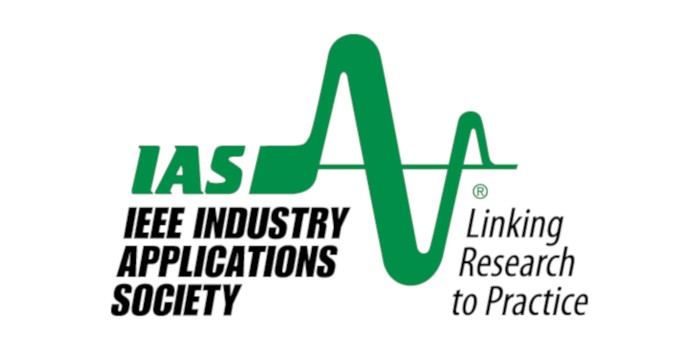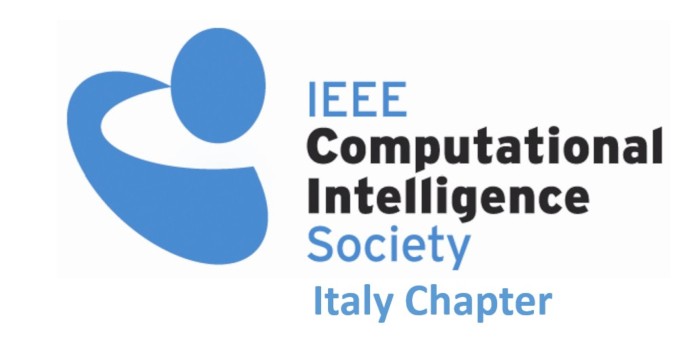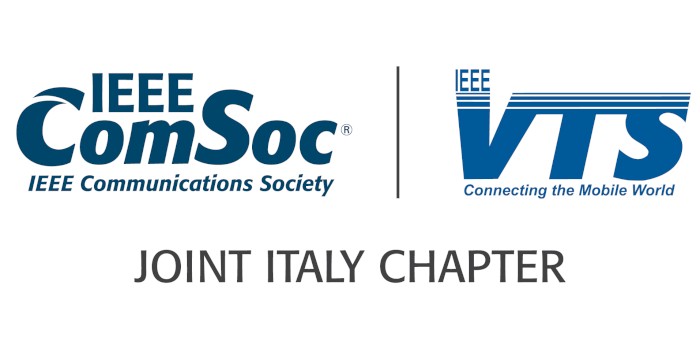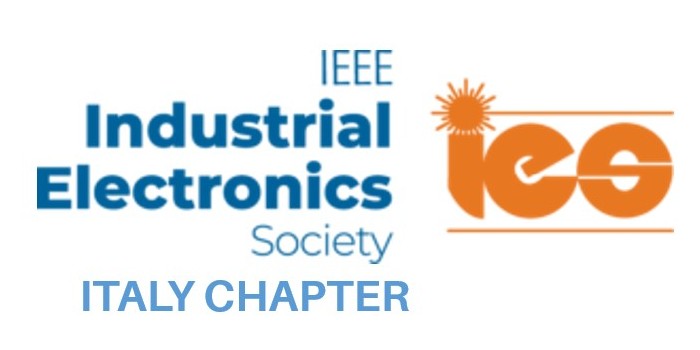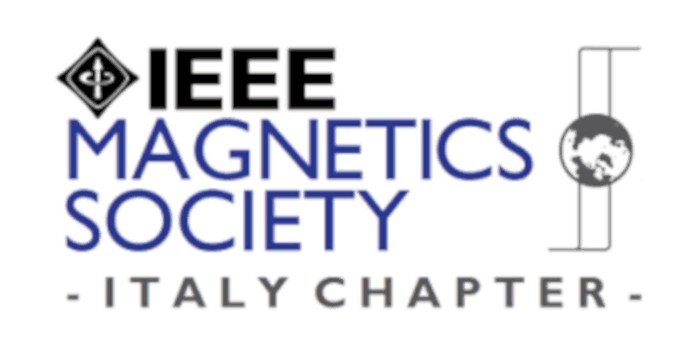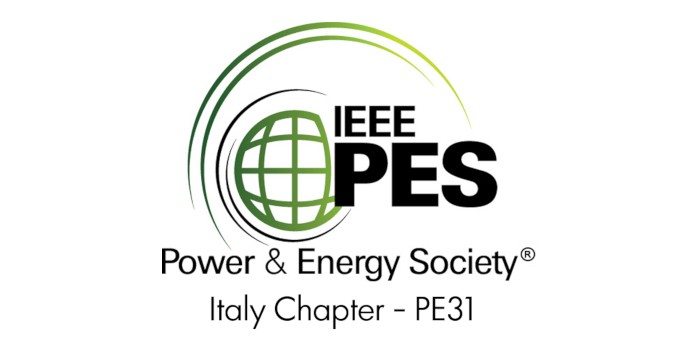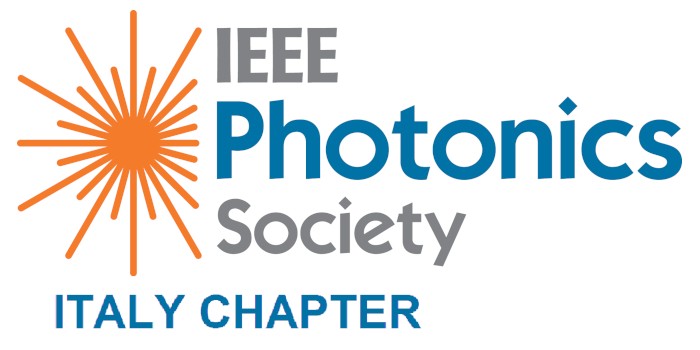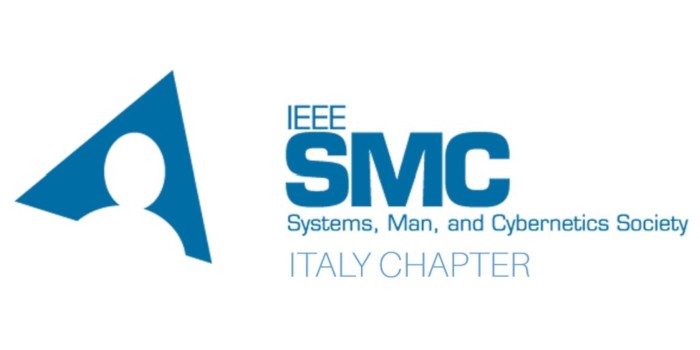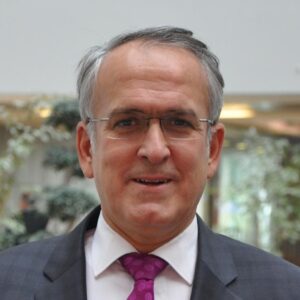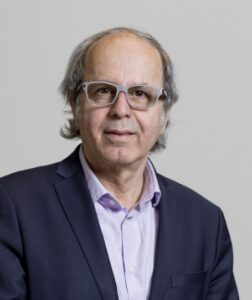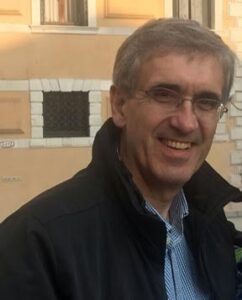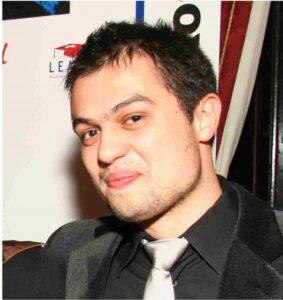Big Data Analytics, Security and Privacy Issues in Smart Energy Systems
Gazi University, Turkey
ABSTRACT – Big data has great potential to provide opportunities not only many fields but also energy enhancing technical, organizational, social and economic gains and contributions. The current potential of applying big data approaches for better planning, managing, designing, and securing power grid operations are very challenging tasks and needs significant efforts. This talk will cover the issues of computational complexity, data security and privacy, cost, management, planning and integration of big data into energy and power grid systems and also focus on the key challenges in big data analytics, privacy and security issues.
SHORT BIOGRAPHY – Prof. Dr. Seref Sagiroglu completed his undergraduate education in 1987 at Erciyes University, Department of Electronics Engineering. He completed his doctoral studies at the University of Wales College of Cardiff (now Cardiff University, UK) in 1994. He continues his academic career as the full professor in Software Engineering at Gazi University Computer Engineering Department. Sagiroglu has an outstanding academic with more than 8000 citation; almost 400 articles published in SCI/SSCI indexed journals, national and international conferences, symposium and workshops.
Prof. Sagiroglu:
- is author and/or editor of more than 20 books, owns 4 patents and has completed national and international projects on security, big data, intelligent modeling and control, biometric, etc.
- organised more than 50 national and international events on artificial intelligence, 5G, Big Data, Machine Learning, Deep Learning, Information and Cyber Security, Privacy, IPv6, etc. as a chairman or co-chairman. Some of them are: International Conference on Information Security and Cryptology (www.iscturkey.org); IEEE International Conference on Computer Science and Engineering (www.ubmk.org); IEEE Big Data, Deep Learning and Fighting Cyber Terrorisms (www.ibigdelft.org); IEEE International Conference on Machine Learning and Applications (www.icmla-conferences.org); Big Data Analytics, Security and Privacy Workshop (www.bigdatacenter.gazi.edu.tr); National Cyber Terrorism Conference (www.siberteror.org); Turkey Open Data Conference (www.acikveriturkiye.org); IEEE 5G Summit-Istanbul (www.ieeesummit.org); IPv6 Council Turkey (www.ipv6forumtr.org); National IPv6 Conference (www.ipv6.org).
- also has been founding members of Information Security Association (www.bilgiguvenligi.org.tr); Member of IEEE Biometric Task Force; Turkish Science Research Foundation (www.tubav.org.tr), and The Foundation of the People Caring for the Future (www.gonder.org.tr). Sagiroglu had such duties as President and Executive Committee Members of those NGOs.
- completed the duties as the Deans of Graduation School of Science and Technology and Engineering Faculty, and Head of Computer Engineering Department at Gazi University; Editors of International Journal of Information Security Science (www.ijiss.org); International Journal of Information Security Engineering (in Turkish) (www.dergipark.gov.tr/ubgmd) and CyberMag (www.cybermag.com); General Director of FutureTech (www.futuretech.com.tr); Member of Cyber Security Group of Higher Education Council of Turkey.
- contributed to consultants to Havelsan; IT Regulatory Body of Turkey (BTK) and Personal Data Protection Regulatory Body of Turkey (KVKK).
- has delivered as invited or keynote speakers more than 500 seminars, talks, conferences at universities, schools, sectors, TV and Radio Programs, institutions and organisations in the topics of Information Security, Big and Open Data, Cyber Security and Defense, Artificial Intelligence, Computer and Software Engineering, Privacy, Biometrics, Innovation Culture Creation, IPv6, 5G, etc.
- now is the director of AI and Big Data Center of Gazi University, Ankara Turkey.
New Challenges for Power Electronics Converters to Reach Filter Less Operation
University of Montreal, Canada
ABSTRACT – For the last several years, researchers have been working on developing remedial power electronics devices and control strategies to reduce the negative impact and mitigate the power quality of the massive integration of power electronics devices on the electric network. New topologies of multilevel type of power electronics converters appeared as to contribute to soften the massive usage of power converters. Many research efforts in this direction is taking place around the world . The presentation will focus on latest development of new technologies while highlighting the challenges facing the growth of interconnecting electric vehicles, drives and renewable sources through power electronics converters to the grid. Moreover, the latest development on the reduction or elimination of passive and uncontrolled components still called filters that are used to deviate current and voltage harmonics paths from reaching the loads as well as the utility network.
SHORT BIOGRAPHY – Kamal Al-Haddad received the B.Sc.A. and M.Sc.A. degrees from the University of Québec à Trois-Rivières, Canada, respectively, and the Ph.D. degree from the Institute National Polytechnique, Toulouse, France, in 1988. Since June 1990, he has been a professor with the Electrical Engineering Department, École de Technologie Supérieure (ETS), Montreal, QC, where he has been the holder of the senior Canada Research Chair in Electric Energy Conversion and Power Electronics since 2002. He has supervised more than 180 Ph.D. and M.Sc. students working in the field of power electronics. He is a consultant and has established very solid link with many Canadian industries working in the field of power electronics, electric transportation, aeronautics, and telecommunications. He has coauthored more than 750 transactions and conference papers. Prof Al-Haddad transferred 25 technologies to the industry. His fields of interest are in highly efficient static power converters, harmonics and reactive power control using hybrid filters, and multilevel converters including the modeling, intelligent control, and development of prototypes for various industrial applications in electric traction, renewable energy, power supplies for drives, electrification and transportation, etc.
Prof. Al-Haddad is a fellow member of the Canadian Academy of Engineering. He is IEEE IES President 2016-2017, IEEE Division VI director elect, associate editor of the Transactions on Industrial Informatics, IES Distinguished Lecturer, and recipient of the IEEE Dr.-Ing. Eugene Mittelmann Achievement Award.
Prof. Al-Haddad is a member of the Academy of Sciences and fellow of the Royal Society of Canada.
Robotics for human-human collaboration and sensorimotor augmentation Systems
Università Campus Bio-medico di Roma, Italy
ABSTRACT – The era of the fourth industrial revolution brings together robotics, digital mobile devices and services, wearable sensors and IoT systems, building a highly interconnected ecosystem often intimately coupled with human beings and their body. These integrated systems are nowadays essential to foster cutting edge research in a wide variety of fields, from basic science research, to medical and industrial applications, to consumers technologies. Based on these considerations, this talk will present how robotics and wearable technologies can be used to investigate basic mechanisms of motor neuroscience, to objectively assess brain pathologies, and to provide new tools to help people in everyday life. In particular, it will deeply discuss some frontier research topics in human robotics, introducing physically interacting robots connecting humans to facilitate the learning of complex sensorimotor tasks, and supernumerary robotic limbs for sensorimotor augmentation.
SHORT BIOGRAPHY – Domenico Formica received the B.S., M.S. and Ph.D. degrees in biomedical engineering from the Università Campus Bio-Medico di Roma, Italy, in 2002, 2004, and 2008 respectively. Since 2011, he has been working as faculty staff at the Università Campus Bio-medico di Roma, where he currently is Associate Professor in Industrial Bioengineering. In 2007 he was visiting student at the Department of Mechanical Engineering of the Massachusetts Institute of Technology, and from 2014 to 2018 he has been visiting scientist at the Nanyang Technological University of Singapore. In 2016 he co-founded the NEXT: Neurophysiology and Neuroengineering of Human-Technology Interaction research unit, a multidisciplinary research group with focus on the study of motor neuroscience in both healthy subjects and neurological patients. He is appointed as Professor of Bioengineering at Newcastle University, starting in March 2022. His research interests lie at the intersection of robotics/mechatronics and neuroscience, and include the areas of mechatronic technologies for studying human motor control, quantitative assessment of patients with neuromuscular disorders, and novel robotic devices to improve motor learning. On these topics he published more than 130 peer-reviewed scientific papers on international journals and conference proceedings. He actively contributed to several important National and EU-funded projects, and in particular he has been awarded of two national grants for young researcher: the “FIRB – Futuro in Ricerca” early career grant for researchers under 32, by the Italian Ministry of Education, University and Research, and the “Ricerca Finalizzata / Giovani ricercatori” early career grant for researchers under 40, by the Italian Ministry of Health. Currently, he is the European Coordinator of the EU project CONBOTS and PI of the EU project NIMA.
Virtual coaching emerges-Developments and advances on persuasive coaching
University of Ioannina, Ioannina, Greece
ABSTRACT – Rehabilitation is one of the main phases towards medicating balance disorders. However, for all rehabilitation sessions, it is not feasible and / or economically affordable to provide patients in-hospital sessions with dedicated clinician. Accordingly, existing physiotherapy health services worldwide are centralized in a hospital or clinic with physicians under direct supervision, followed by rehabilitation sessions according to which patients do a series of controlled activities in their own homes. Nowadays, technological developments on sensing devices, edge computing and communication protocols have facilitated the collection of reliable data related to the state of a patient, like motion, ECG and other biosignals. Based on these data, AI solutions have been proposed with the capacity to infer the performance of a patient during a home-based rehabilitation program. Based on this evaluation, smart agents monitor the long term progress of the patient and automatically re-design the management policy, in terms of rehabilitation program design and dosage. These closed-loop persuasive systems, which are usually complemented with virtual or holographic technology, provide also to the significant others (e.g. clinicians, physiotherapists) a monitor and communication channel with the patient, enabling the in-time red-flagging.
SHORT BIOGRAPHY – Prof. Dimitrios I. Fotiadis, received the Diploma degree in chemical engineering from the National Technical University of Athens, Athens, Greece, and the Ph.D. degree in chemical engineering and materials science from the University of Minnesota, Minneapolis. He is currently a Professor of Biomedical Engineering in the Department of Materials Science and Engineering, University of Ioannina, Ioannina, Greece, where he is also the Director of the Unit of Medical Technology and Intelligent Information Systems, and is also an Affiliated Member of Foundation for Research and Technology Hellas, Institute of Molecular Biology and Biotechnology, Dept. of Biomedical Research. He was a Visiting Researcher at the RWTH, Aachen, Germany, and the Massachusetts Institute of Technology, Boston. He has coordinated and participated in more than 250 R&D funded projects (in FP6, FP7, H2020, and national Projects), being the coordinator (e.g. INSILC, TAXINOMISIS, HOLOBALANCE, CARDIOCARE, DECODE, etc.) and Technical coordinator (e.g. SMARTOOL, KARDIATOOL, TO_AITION, etc.). He is the author or coauthor of more than 300 papers in scientific journals, 500 papers in peer-reviewed conference proceedings, and more than 50 chapters in books. He is also the author/editor of 30 books. His work has received more than 19,000 citations (h-index=68). He is IEEE EMBS Fellow, EAMBES Fellow, Fellow of IAMBE, member of the IEEE Technical Committee of information Technology in Healthcare, Editor in Chief of IEEE Journal of Biomedical and Health Informatics, Member of the Editorial Board in IEEE Reviews in Biomedical Engineering, Associate Editor for IEEE Open Journal in Engineering in Biology and Medicine and Computers in Biology and Medicine. His research interests include multiscale modelling of human tissues and organs, intelligent wearable/implantable devices for automated diagnosis, processing of big medical data, machine learning, sensor informatics, image informatics, and bioinformatics. He is the recipient of many scientific awards including the one by the Academy of Athens. He is the co-founder of PDNeurotechnology Ltd, UK.
Reconfigurable Intelligent Surfaces for Wireless Communications
CNRS & Paris-Saclay University
ABSTRACT – A Reconfigurable Intelligent Surface (RIS) is a planar structure that is engineered to have properties that enable the dynamic control of the electromagnetic waves. In wireless communications and networks, RISs are an emerging technology for realizing programmable and reconfigurable wireless propagation environments through nearly passive and tunable signal transformations. RIS-assisted programmable wireless environments are a multidisciplinary research endeavor. This presentation is aimed to report the latest research advances on modeling, analyzing, and optimizing RISs for wireless communications with focus on electromagnetically consistent models, analytical frameworks, and optimization algorithms.
SHORT BIOGRAPHY – Marco Di Renzo is a Research Director (Professor) with the French National Center for Scientific Research (CNRS), in the Laboratory of Signals and Systems (L2S) of CentraleSupelec – Paris-Saclay University, Paris, France. In Paris-Saclay University, he serves as the Coordinator of the Communications and Networks Research Division of the Laboratory of Excellence on Digital Sciences, and as a Member of the Admission and Evaluation Committee of the Ph.D. School on Information and Communication Technologies. He is the Editor-in-Chief of IEEE Communications Letters and a Distinguished Speaker of the IEEE Vehicular Technology Society. He is a Fellow of the UK Institution of Engineering and Technology (IET), a Fellow of the USA Institute of Electrical and Electronics Engineers (IEEE), an Ordinary Member of the European Academy of Sciences and Arts (EASA), an Ordinary Member of the Academia Europaea (AE), and a Highly Cited Researcher. Also, he is the Vice-Chair of the Industry Specification Group on Reconfigurable Intelligent Surfaces – European Telecommunications Standards Institute.
Towards Automated Visual Inspection of Civil Engineering Structures
IBM Research Zurich
ABSTRACT – The maintenance of public infrastructure is essential to avoid faster deterioration of assets and shortening of their lifetime. One of the main challenges is however the rising cost associated with physical inspections and continued maintenance. Indeed, roughly 50 billion dollars and two billion civil-engineering labor hours are spent globally each year monitoring bridges for defects.
Increasing the efficiency of monitoring strategies, risk assessment and intervention prioritization without any compromise on safety and regulations could therefore have a considerable impact in revolutionizing infrastructure maintenance.
In this talk I will present some of the progress that IBM Research has been driving in realizing this vision by combining Drone and AI technologies to accelerate inspection of large civil infrastructures. Our technical solution consists of 4 key components, namely: (1) a drone platform for creation of automatic and repeatable navigation paths aimed for high quality image and data capturing (2) 2D rendering of large elements (pillars, towers) by automated stitching of drone captured images, enabling global localization and disambiguation of defects (3) advanced deep learning methods for detecting tiny defects on high-resolution images with high recall, and (4) automated measurement and extraction of defect properties for further analysis by civil engineers. The combination of these components allows to massively accelerate the time of inspection, while making the process scalable and repeatable, and has been demonstrated on one of the longest suspended bridges in the located in Denmark.
SHORT BIOGRAPHY – Mattia Rigotti received a Master’s degree in Theoretical Physics from ETH Zürich and a PhD in Computational Neuroscience from Columbia University. In 2014 he joined IBM as a research scientist at the IBM Thomas J. Watson Research Center in Yorktown Heights, NY, where he worked on research projects at the interface between machine learning and computational neuroscience, including Reinforcement Learning and the implementation of neural networks training algorithms on energy-efficient neuromorphic hardware.
Recently, Mattia joined the AI automation team in the IBM Zürich Research Lab, where he shifted his research focus on developing data-efficient machine learning, applying deep learning to computer vision for infrastructure monitoring and visual inspection, designing trustworthy and explainable deep learning models, and other research topics motivated by the desire to make machine learning models easier and safer to deploy in large-scale real-world scenarios where they can drive positive societal impact.

